By Joe Berk
I know, we’re a motorcycle (and other interesting stuff) site, and you might be thinking this blog is going to be about a Lotus Evora (the Evora is a Lotus sports car). The Evora is probably an incredible automobile, but that’s not why we are here today.
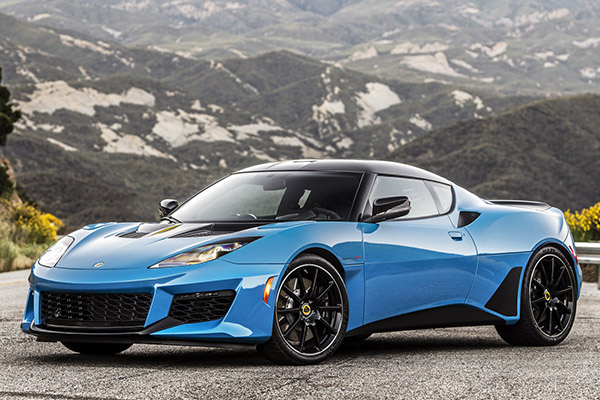
The word Évora is a feminine word of Portuguese origin; it means “she who lives near yew trees.” That’s about as irrelevant as the big photo up top. But hey, we’re a motorcycle site, and who wouldn’t enjoy a photo of a Barbie-themed pink BMW cafe racer carousel ride? I saw those carousel Beemers as we walked into Évora. They called out to me. I had to get a photo.
But I digress: Our focus in this blog is indeed Évora, but it’s not about the Lotus. It is about a small 2,000-year-old town in Portugal, a World Heritage Site, named Évora. Before I get to the Évora photos, let me digress a bit more and tell you about our stop as a gas station on the ride from Lisbon to Évora. That gas station had a magazine rack. They still do printed motorcycle magazines over there, you know.
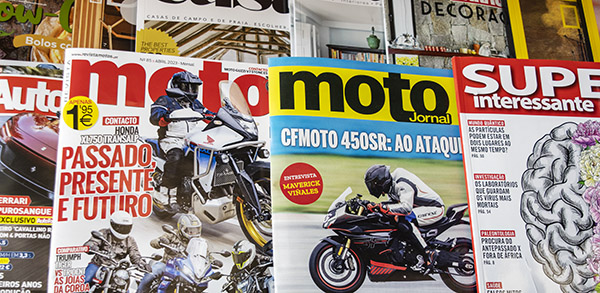
On to Évora. One of our first photo ops was the Capela dos Ossos (the Chapel of Bones). It was one of many churches we would see on our travels through Spain and Portugal, but this one had a rather bizarre twist: The walls and columns are covered in bones.
Yep, I said bones. Human bones. Weird stuff, this is.
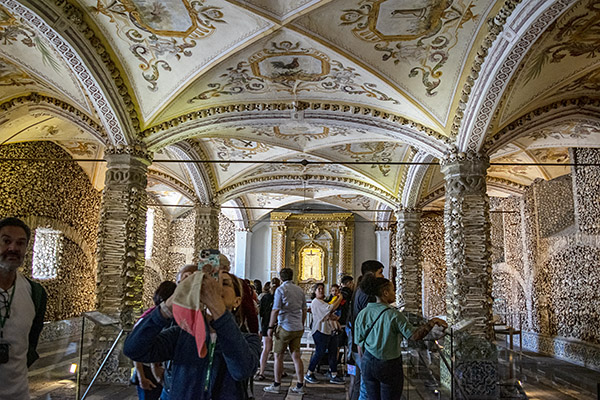

The Capela dos Ossos is a small chapel (it’s located next to the larger Church of St. Francis), and it was built by Franciscan monks in the 16th century. I guess they wanted it to stand out, and to accomplish that, the guys dug up medieval cemeteries and used the bones from an estimated 5,000 dead folks as interior decor. It was weird, man. Bones. I tried to imagine the conversation hundreds of years ago that led to this decision. Sue and I have had interesting discussions about our interior paint and wallpaper choices. I get it that these decisions are not always easy and everybody has opinions. But bones? Those old Portuguesers must have had some spirited interior decor conversations. Paint? Nah. Wallpaper? Nah. Tiles? Maybe a little, but everybody’s done tiles. Bones? Yeah, that could work.
All this kind of made me think about cremation as an alternative to burial, but I’m not going with either option. I’ve already left directions to my heirs. I’m going to be stuffed when I go. Stuffed with bullshit, and mounted in front of my laptop. You know…so I can keep writing the blog.
One thing I love about travel anywhere is that it gives me lots of photo opportunities. Here’s another picture of a more conventional statue in the bone barn.
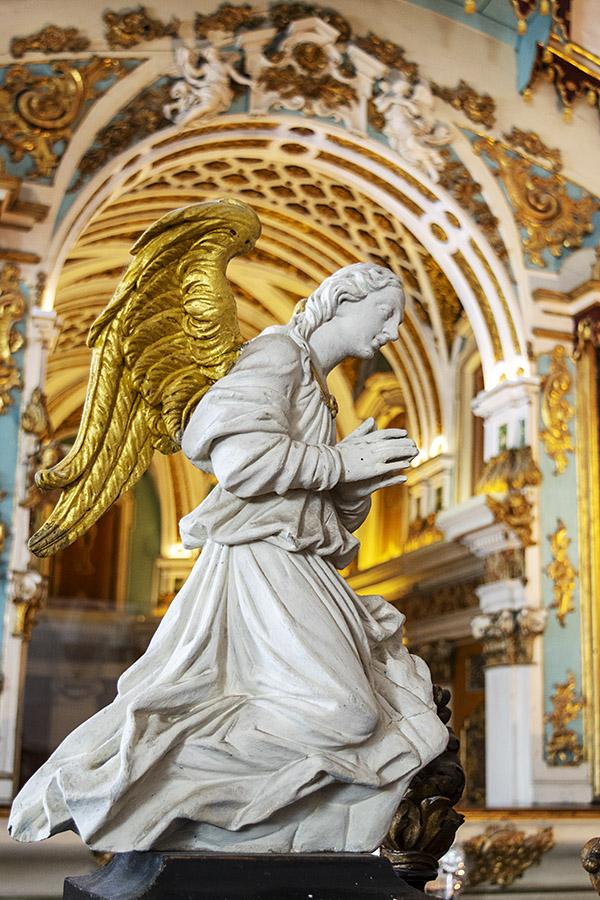
Gresh asked me about two-stroke motorcycles in Portugal. The only one I saw was this older Zündapp. It was very clean, it was plated, and it was obviously still in use.
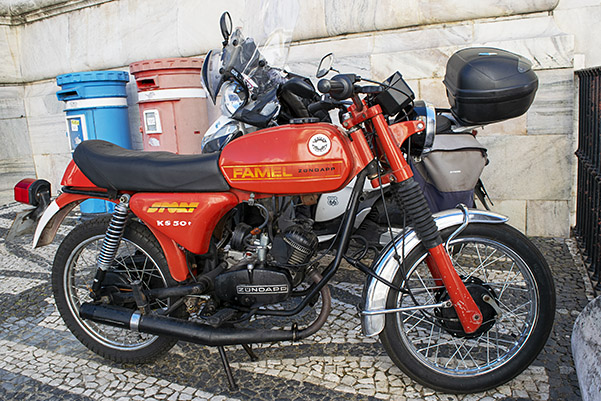
I would see a few more two-stroke motos in Spain, but two-strokes have pretty much had their day on the Iberian peninsula. Bultaco, Ossa, and Montesa (or was it Montessa?) are no more. Gresh loves his two strokes and he owns several. I’ve only had one, a BSA Bantam two-stroke.

My Beezer didn’t look anything like the one you see on the Clymer BSA book above (which is an excellent reference, by the way). Mine was a clapped out, rattle-can black beater bike. But it was fun and frisky and for a 175 it had power way out of line with its displacement. Maybe some day I’ll get another two-stroke motorcycle, but the odds are low. The way the world is going it’s more likely I’ll have an electric motorcycle first, but that’s a topic for a later blog.
I’m digressing again. Back to the main attraction. Colors abound in Portugal. I grabbed this photo of a few plates on display.
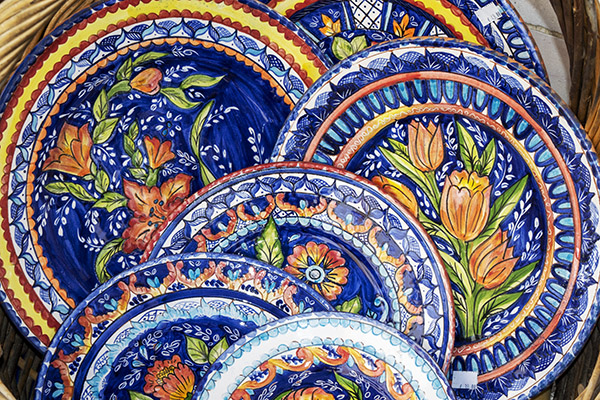
As we walked through Évora, the door handles and knockers caught my attention. Here are a few photos.

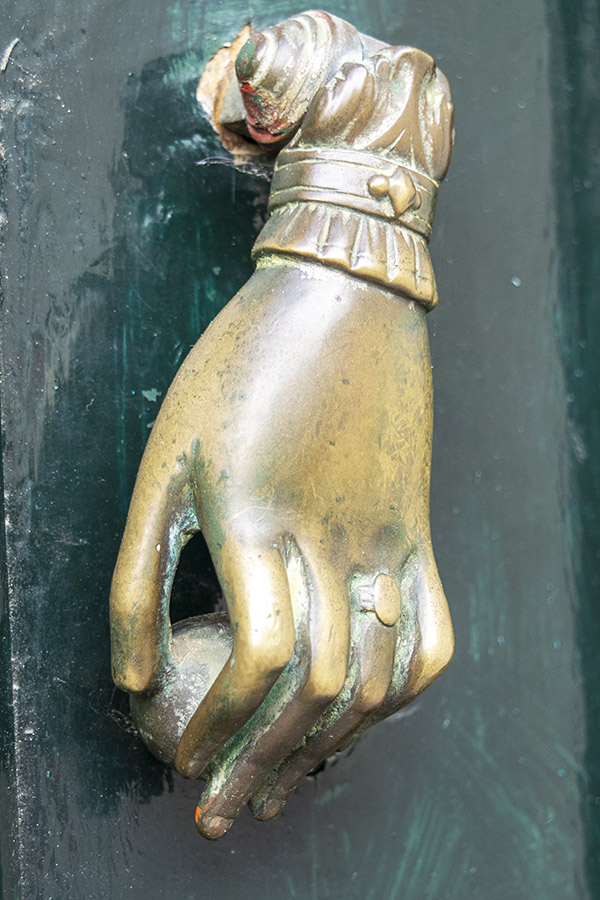
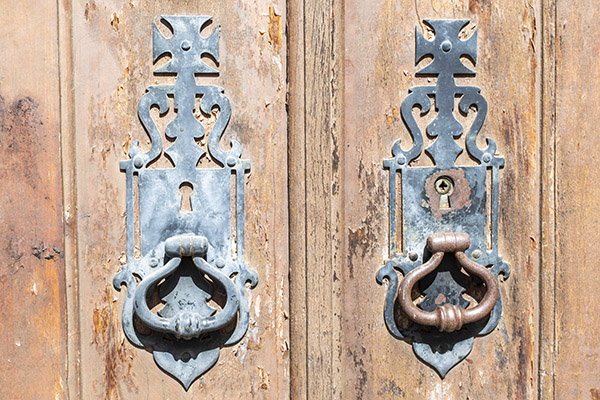
Many of the doors were cool, too. I’ll show more of these photos in subsequent blogs. I took a bunch.
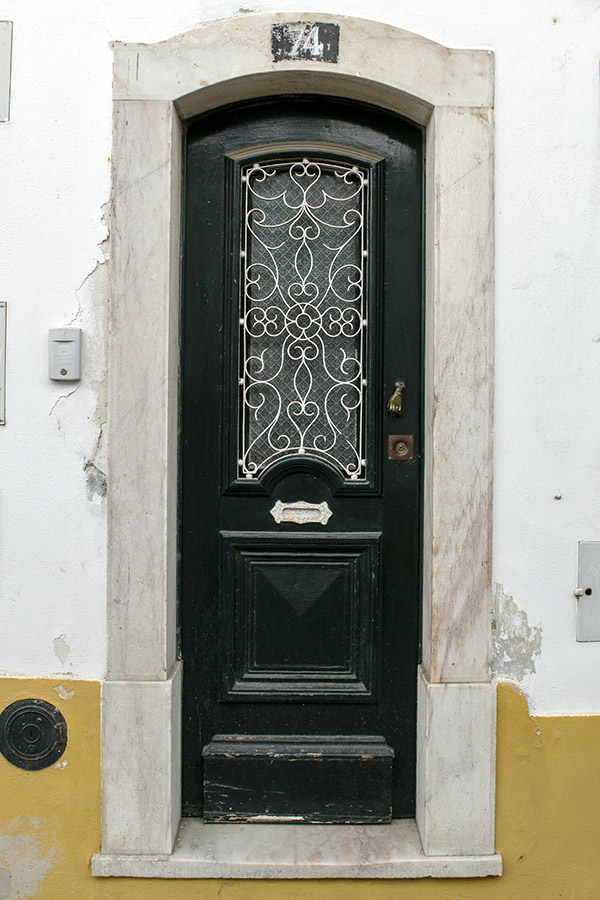
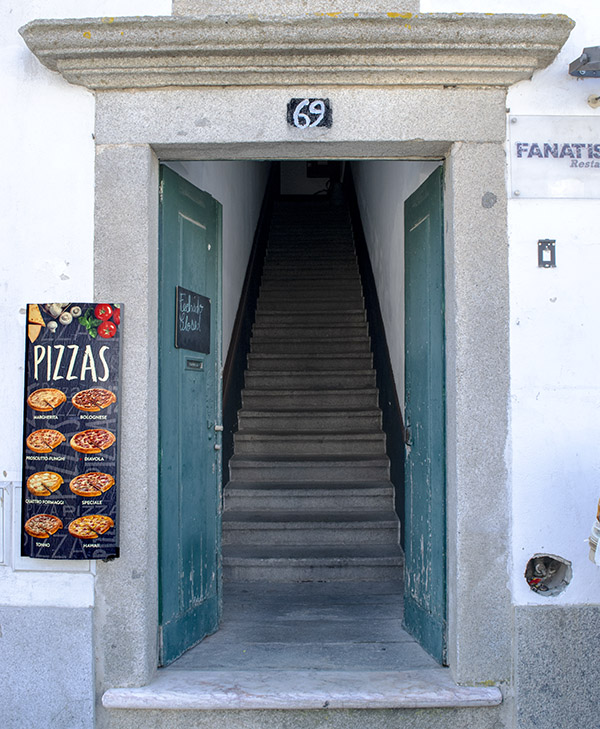
Cork is a big industry in Portugal, and we saw many different cork products (cork bowls, cork pads, cork purses, cork hats, and more). Did you ever wonder where cork comes from? Cork is made from tree bark (something I did not know). The tree is called a cork oak, and the bark can be harvested every 9 years after the tree matures (the bark grows back). Spain and Portugal are the dominant suppliers.
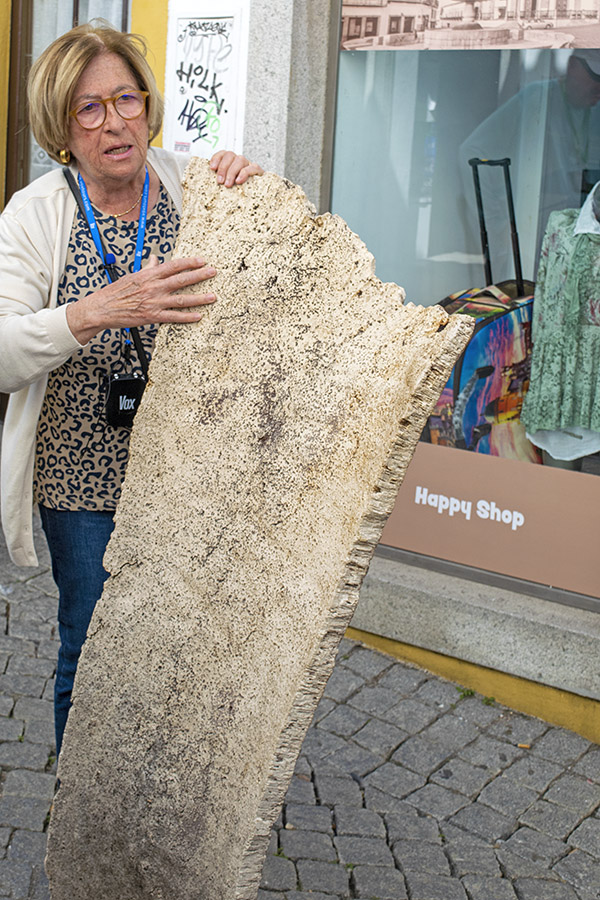
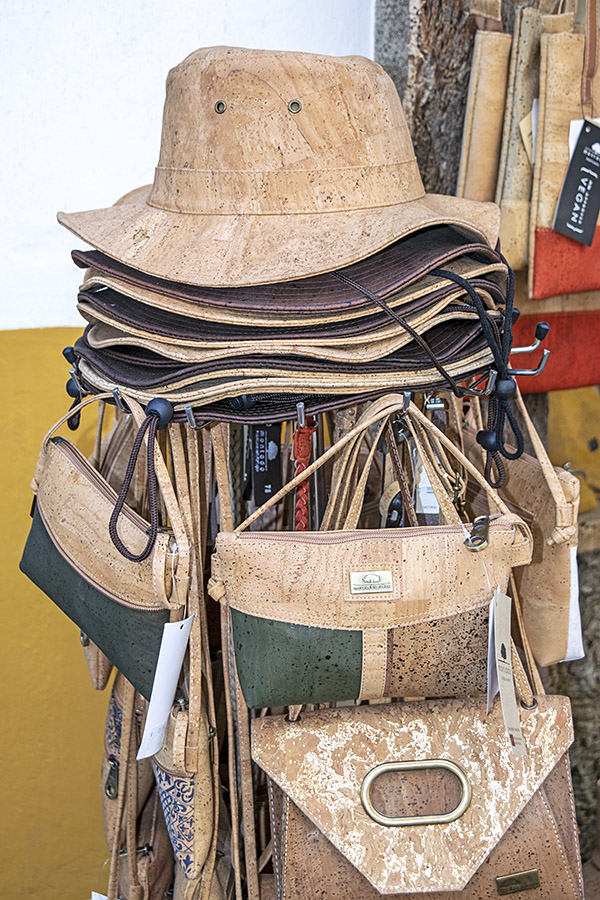
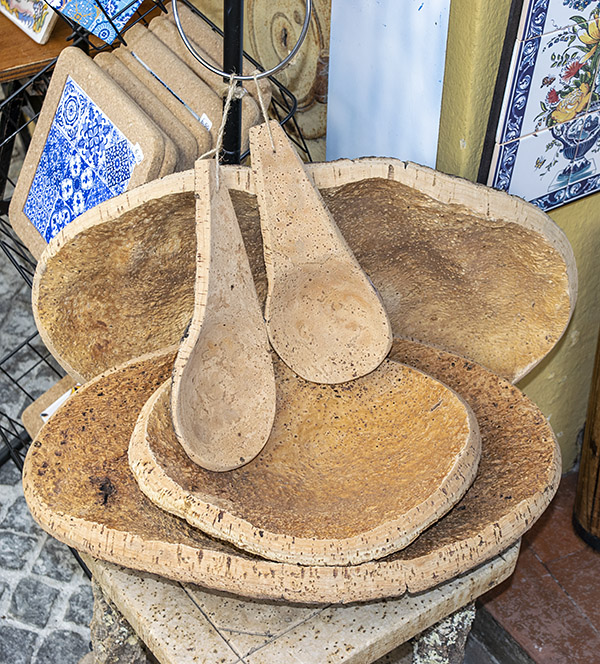
Évora is a colorful place. Walking Évora’s narrow and climbing streets was fun, and the photo ops made it even more so.
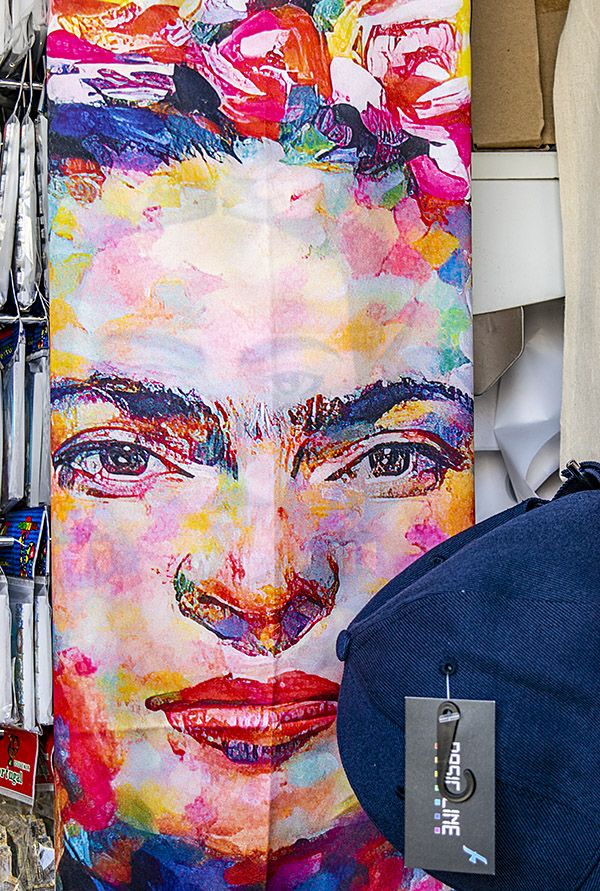
Évora dates to the Roman occupation of the Iberian peninsula. The remains of the Temple of Diana are on a hill overlooking the city’s center; the temple was built in the first century. It’s known today as the Temple of Diana, but that’s not what it was when the Romans built it. A 17th century priest, Father Manuel Fialho, is believed to be the person who tagged it as the Temple of Diana. It’s too bad we don’t do politics here on ExNotes; this story screams out for a Father Fialho comparison to Fox News or CNN (depending on which way you lean).

Portugal is a well-developed nation with excellent roads. I’d say it is better-maintained and cleaner than a lot of places I’ve been in the US. The expressways were every bit as good as ours, and other than the fact that signs were not in English and there was little traffic, the freeways were no different than the ones in southern California. The climate is about the same, the towns and roads are much cleaner, and we didn’t see any homeless people. Prices on everything except gasoline were similar to those in the US (gas was around $8 per gallon), but the average wage is substantially lower (their average annual income is about a third of ours). Somehow they make it all work.
The photo below shows the view from our bus just before we entered Spain.
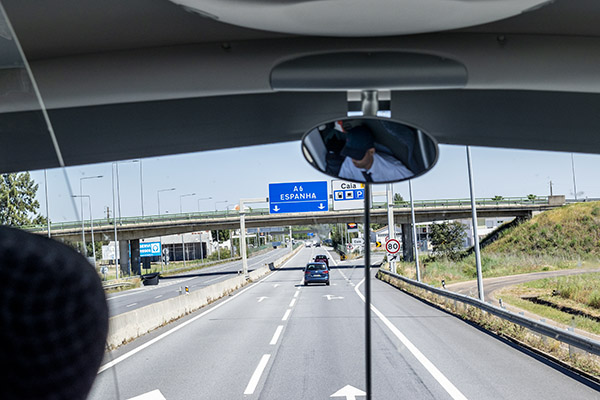
I’m skipping around a bit. There’s more to cover from our time in Portugal, and I’ll touch on that in subsequent blogs. For now, it was on to Spain.
To be continued…

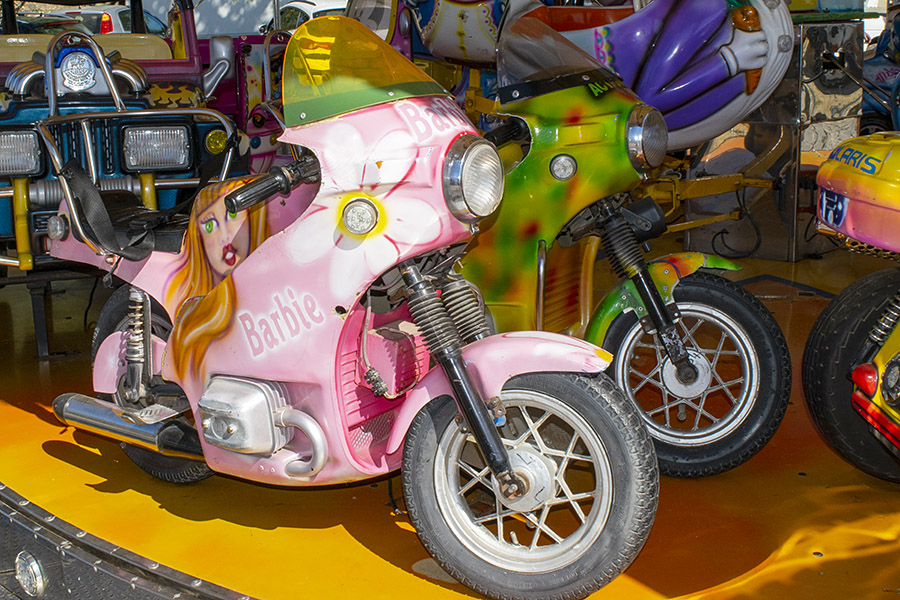
Growing up in this country, I learned to associate being poor with the inability to live in cleanliness and have nice things. It wasn’t until I visited other countries, that I realized this is not true. People who are poor realize that they have to take care of what they have because they may not be able to replace it. I was surprised that I had been blind to that logic until that day. It should have been obvious. They realize that they can’t afford an orange Subaru WRX, but their old Volkswagen still runs well, looks good, and gets them from point A to point B, which is the generally accepted idea of transportation. It looks good and runs well because they take care of it. Their house looks good because they clean it, repair it, and paint it. They simply take pride in what they have.
Travel be good.
What? Well ok . I have seen these door handles featured on TV.
2 strokes are fun . Electric motorcycles suck .
Cork is cool.
Thanks for commenting, Corky.
In another life I used to buy 1000’s of corks. I did a little research and found out where they came from and how they were made. Portugal is the place and cork tree bark is the material, who knew that!
Oh, about corks…they are used in the making of Neon tubes (like neon signs) to block the open end of the tube when blowing into the heated glass in bending. Please continue your tour and take us along please.
Will do, Terry. Thanks for commenting.
perhaps a new book for you to write Joe…. doors, door handles and light switches of the world. You can thank me later. 🙂
Hmmmm.
Joe, you have an inquisitive and discursive bent. Those of us on the sidelines enjoy your wandering ways. Keep going. ~ Marty
Thanks, Marty. I will keep going. You do the same.
You got me on that one. I had to look up “discursive.”